Estimated reading time 9 minutes, 57 seconds.
Fifty years ago, de Havilland Canada (DHC) was the global leader in the design and production of STOL (short takeoff and landing) aircraft. Beginning with the DHC-2 Beaver in 1947 and following with the DHC-3 Otter, DHC-4 Caribou and DHC-5 Buffalo, the Toronto-based company had developed a family of ever-larger airplanes that could access isolated locations — with or without a runway.

DHC entered a growth market when it delivered its first DHC-6 Twin Otter in 1966. The commuter airline industry was taking flight, as tiny air taxi operators initiated scheduled service into major airports from smaller communities within a 200-mile radius. The Twin Otter’s 19-seat cabin and turbine power provided an attractive upgrade from the typical five-to-nine seat piston-powered twins (Aztecs, Doves and Beech 18s) flown by third-level carriers.
By 1968, the U.S. government was concerned that air traffic congestion was going to stifle economic growth in the largest metropolitan centres on both coasts. Studies concluded that while the major airports would remain ideal for medium- and long-distance flights, short haul traffic would be best served by high speed rail and specialized air transport facilities.
The latter would include new 2,000-foot “stub” runways at large airports and the creation of “STOLports” near city centres. As these would be dedicated to STOL aircraft, there appeared to be a need for an aircraft larger than the Twin Otter.
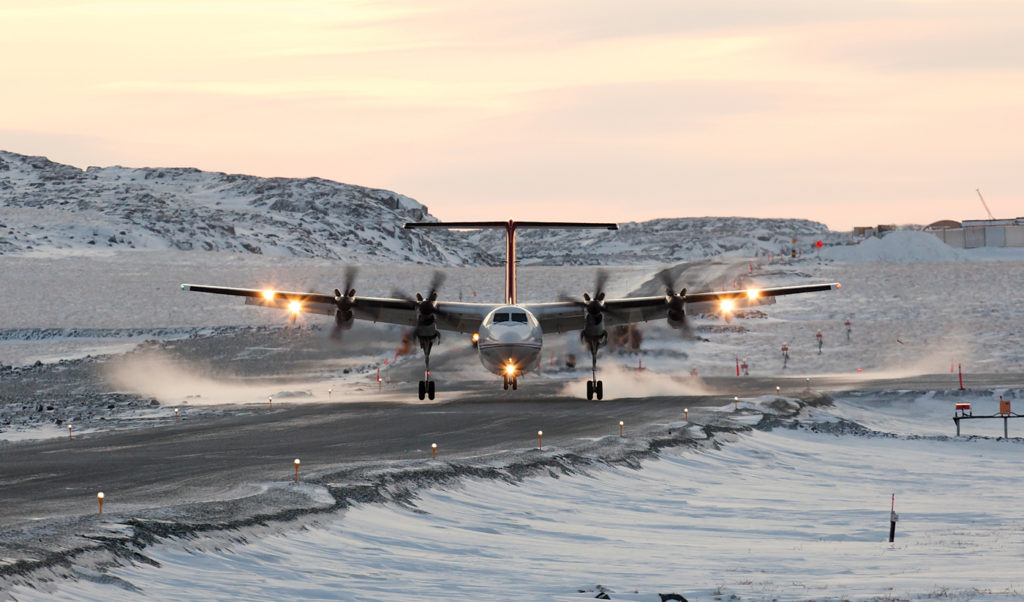
Dawning of the Dash
By late 1968, DHC had built a cabin mock-up of a 50-seat, high wing four-engine turboprop airliner. Given its lineage, it was nicknamed “dash 7” — as in DHC-7.
In July 1970, after DHC’s British parent company expressed its disinterest in the aircraft, the Canadian government provided funding that advanced the project to the development stage. On Oct. 6, 1972, the federal government announced that two DHC-7 prototypes would be built and that a decision on production would be contingent on the type receiving full certification.
Earlier, Pratt & Whitney Canada had received federal funding to develop an engine specifically for the aircraft. The resulting PT6A-50 produced 1,120-shp and had a lower rpm gearbox that enabled large diameter (11’3″/3.42m) propellers to turn at a relatively slower speed. As a result, the aircraft had a lower noise footprint. It was hoped that this attribute, as well as its impressive short field performance, would make it an acceptable neighbour at urban locations.
On Oct. 1, 1973, the DHC-7 was officially named “Dash 7” and an aggressive marketing campaign began. On May 27, 1974, the Canadian government acquired DHC from Hawker Siddeley, and on Nov. 26 permission was granted for the production of 25 aircraft.
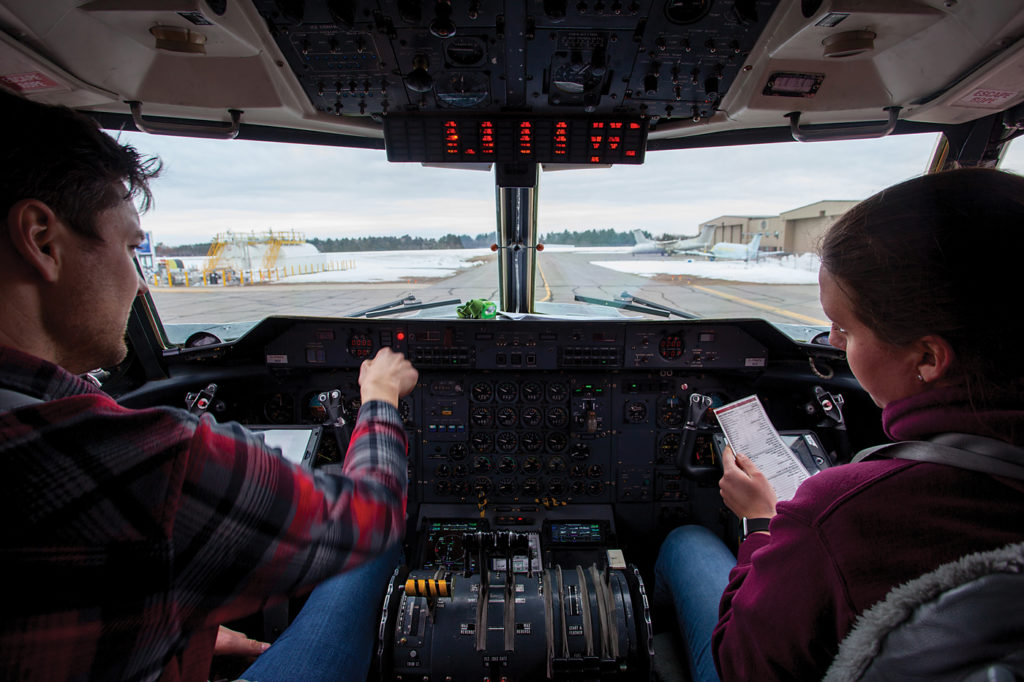
The prototype was unveiled on Feb. 5, 1975, and it first flew on March 27. The second prototype took flight on June 26, 1975. Although its certification was received from Transport Canada on May 2, 1977, the first Dash 7 delivery wasn’t until Jan. 18, 1978. Rocky Mountain Airways of Denver, Colo., placed it into service between Denver and its new STOLport at Avon, Colo., (near Vail) on Feb. 3.
The second delivery was made to Wardair on June 8, 1978. Soon after, it carried Queen Elizabeth II and the Duke of Edinburgh during a royal tour in Alberta. After that, it was hauling everything from containers of mineral concentrate and building materials to personnel and perishables.
Nine months later, the same aircraft shuttled scientists and 55 tons of goods between CFB Alert on Ellesmere Island and an ice camp near the Geographic North Pole.
Change in the flight plan
From the beginning, the Dash 7 was targeted at the U.S. airline industry. The competitive landscape of that business was shaken by a regulatory earthquake on Oct. 24, 1978, when the Airline Deregulation Act became law. Now free to operate anywhere that they wished to, airlines looked to expand their route networks and ordered jet aircraft that would be required for medium- to longer-haul routes.
At that time, a key operating expense was rising. The average crude oil price had increased almost 150 per cent from US$15 per barrel during 1978 to US$37 during 1980. This was viewed as an opportunity by DHC to sell its fuel-efficient Dash 7 to carriers that were operating less efficient Boeing 737s and McDonnell Douglas DC-9s on short routes. During 1980, DHC reported that the U.S.-based Dash 7 fleet was flying an average stage length of 140 miles in scheduled service and had achieved a dispatch reliability of 99.1 per cent.
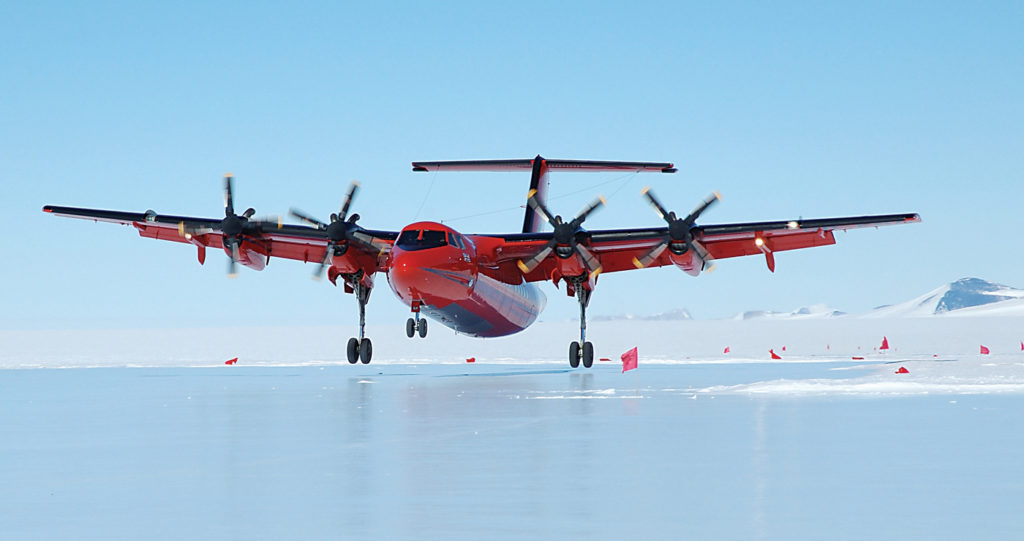
Although widespread development of “stub” runways and STOLports never occurred, the Dash 7’s 50-seat cabin and its quiet characteristics made it popular with commuter airlines across North America. During the early 1980s, new Dash 7s were delivered to Air Wisconsin, Atlantic Southeast, Golden Gate, Hawaiian, Henson, Ransome, Rio Airways and Time Air.
Carriers that were flying into challenging airfields in other parts of the world also purchased new Dash 7s. These included Air Guinée (Guinea), Air Niugini (Papua New Guinea), Alyemda (South Yemen), Arkia (Israel), Brymon Airways (UK), Greenlandair (Denmark), Inex-Adria Airways (Yugoslavia), Intercor (Colombia), Maersk Air (Denmark), Newmans Airways (New Zealand), Tyrolean Airways (Austria) and Wideroes (Norway).
Only two military operators purchased new Dash 7s. The Canadian Armed Forces received a pair of CC-132 transport aircraft in September 1979. The first was a low-density passenger version, while the second was combi-configured to carry passengers and cargo together. Both were assigned to 412 Squadron at CFB Lahr in Germany. The combi was sold in August 1985 and the other departed in April 1987. The Venezuelan Navy acquired a new Dash 7 in 1982 and operated it until 1996.
By January 1985, 100 Dash 7s had been delivered.
But the four-engine aircraft’s fate was sealed when the first Dash 8 Series 300 flew on May 15, 1987. It could carry 50 passengers 24 per cent faster (285 kts versus 230 kts) and 29 per cent farther (890 NM versus 690 NM) than the Dash 7, with half the number of engines.
After the production line closed in July 1988, many other operators at home and abroad, including the U.S. Army, added previously-owned Dash 7s to their fleets.
The current situation
Today, only 19 of the 113 Dash 7s produced remain in service. Six operators use them to accomplish a wide range of tasks in extremely different environments:
Air Tindi – Yellowknife, N.W.T. / DHC-7 Fleet: 4
Its four aircraft primarily support natural resource exploration, remote site rehabilitation and national defence missions. Alasdair Martin, the company’s president, mentioned to Skies that its Dash 7s have been the largest aircraft to use the short strips at Grise Fiord (1,950 feet) and Kimmirut (1,900 feet) in Nunavut.
Airkenya Express – Nairobi, Kenya / DHC-7 Fleet: 2
Carrying tourists on the safari circuit, these 50-seaters fly into short unprepared airstrips in national parks within Kenya, Tanzania and Uganda. Dino Bisleti, the carrier’s general manager, told Skies, “We have been operating Dash 7s since 1988 and have found them to be strong and reliable, with a real STOL capability.”
British Antarctic Survey (BAS) – Cambridge, United Kingdom / DHC-7 Fleet: 1
Since 1994, the BAS has flown its Dash 7 south to its base at Rothera on Antarctica. From October until March, it shuttles personnel and supplies between Rothera and Stanley, Falkland Islands (1,155 SM) and to Punta Arenas, Chile (1,015 SM). It also flies as far south as the ice strip at Sky-Blu (74.85 degrees south).
Trans Capital Air – Toronto, Ont. / DHC-7 Fleet: 3
Since May 2000, this operator’s DHC-7s have supported United Nations missions in 16 countries including Afghanistan, East Timor, Nepal and Somalia. Antoine Pappalardo, the company’s president, told Skies, “During the past 19 years, our Dash 7s have successfully completed approximately 40,000 air taskings with a zero injury and zero fatality flight safety record.” Trans Capital’s founder, Victor Pappalardo, described the DHC-7 as a “flying Mack truck.”
Transport Canada – Ottawa, Ont. / DHC-7 Fleet: 1
From July until October, this uniquely equipped example can be found in the Arctic patrolling shipping lanes. Outfitted with sophisticated scanners and cameras, it can transmit vital information (voice, data and images) that document the presence of environmental hazards, undesirable marine traffic and wildlife activity to the appropriate authorities.
United States Army – Washington, U.S.A. / DHC-7 Fleet: 8
Designated as EO-5Cs, these Dash 7s are used to intercept electronic transmissions in order to track down elusive adversaries. Their high-resolution infrared and optical sensors are said to be capable of tracking footprints in sand. They are deployed to geopolitical hotspots.
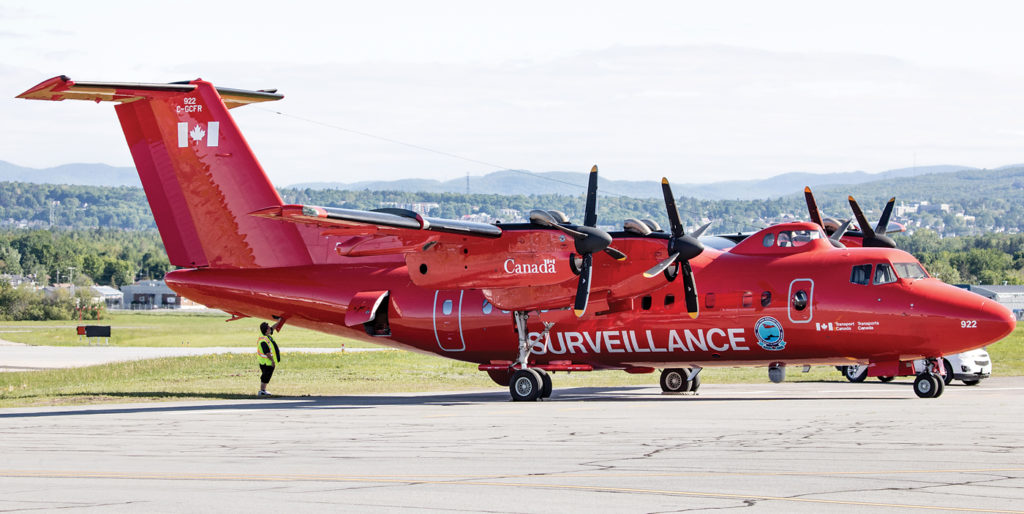
How much time is left?
Now into its fifth decade, the Dash 7 has served reliably on all seven continents. Viking Air of Victoria, B.C., has owned the DHC-7 type certificate since 2006.
Today, it is the sole source of certified factory-new spare parts. Spokesperson Angie Murray advised Skies that, “Viking is committed to supporting our operators for the duration of their aircraft’s operational use.”
How long might that be? Al Martin of Air Tindi noted, “We expect to be operating the Dash 7 for another 10 years.”
Meanwhile, FlightSafety International’s Toronto Learning Centre continues to offer maintenance technician courses and pilot training on a Level B certified Dash 7 simulator.
Forty-four years after it first flew, this Canadian aerospace icon is expected to perform many more missions before it retires.
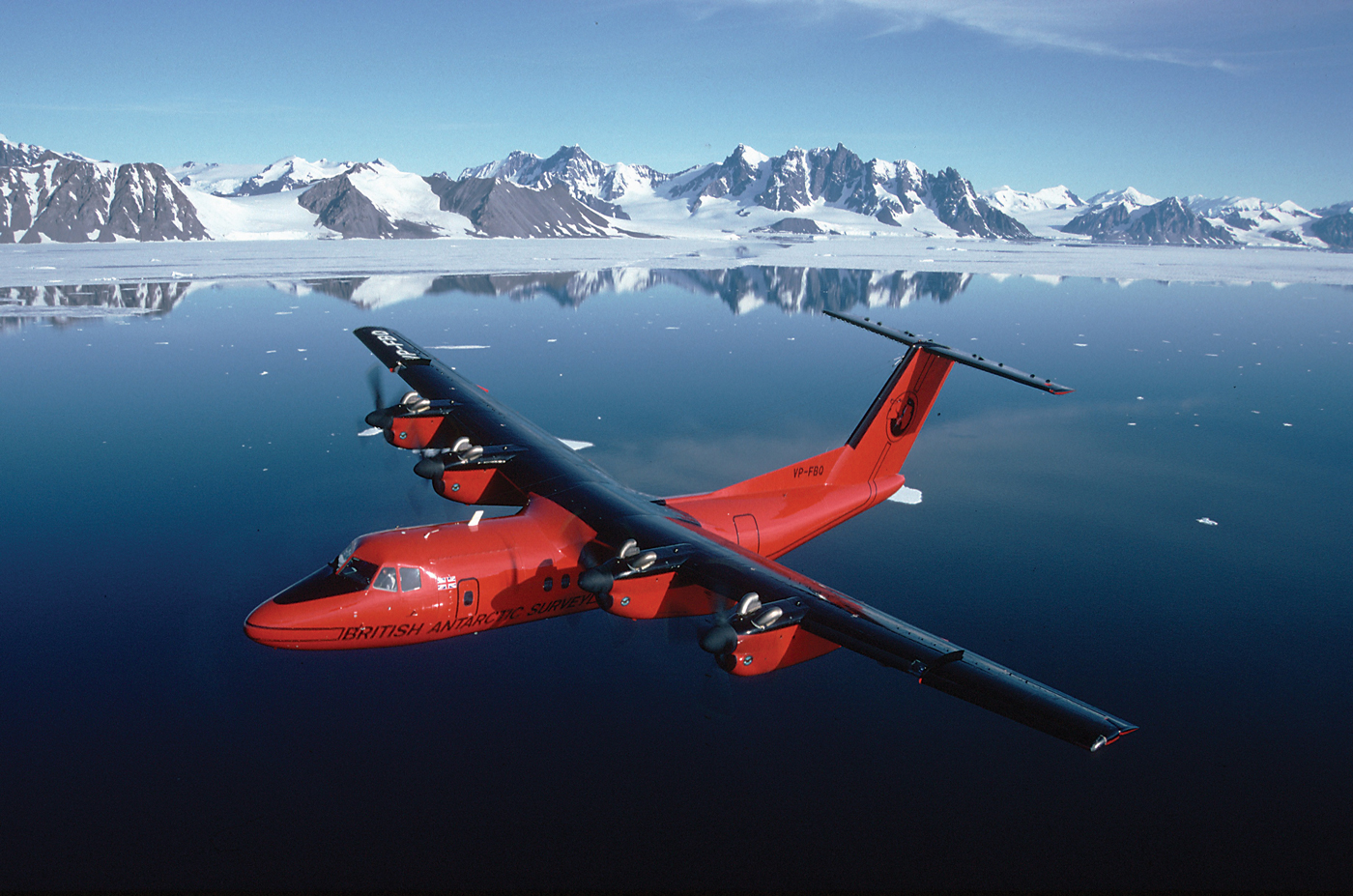

Interesting article on the DHC-7. Can I ask where your information came from regarding the DHC-7s left in service and how up to date it is? The reason I ask is that for example at least one EO-5C [N765MG] turned up to be parked at AMARG 05/2019, so does your 8 in US Army service include that one? Also where does the information come from that all are EO-5Cs in US Army service as at least 2 were designated EO-5B [N53993/N705GG] or are you saying they all been re-designated?
With regards to some of the others listed Air Kenya’s own website states only one in service but you state two? https://www.airkenya.com/General/fleet
Reginald, thank you for your questions. Over their years in service, the U.S. Army examples have had a variety of designations. EO-5C is the most recent one. At the time of writing, eight were in service. Nonetheless, the type is expected to be retired in the near future. With respect to Airkenya Express, the company’s General Manager confirmed that the company is using both of its Dash 7s. Regards.
Excellent article. Hard to believe only 19 still exist. They are certainly a work horse win the industry. Very reliable.
Have logged almost 10,000 hrs in the DHC 7 with not many problems, loved it. Dependable, safe and quiet.
Does Viking think there is a market place or any plans for a new Dash 7 variant? The ATR 42 and 72 cargo combi’s are still very popular but do not have the performance or capabilities of the Dash 7. The biggest issue with the Dash 7 are Engines and Propellers. If they were to replace the obsolete Pratt and Whitney PT6-50 engine and Dowty Propeller system with the PT6-67R and Hartzell 5 bladed propeller like on the DC3 Basler it would be a real power house and a viable alternative to the ATR.
I was wondering if there are any DHC-7’s in storage. If so, could any be placed back into service due to any increased demand by an airline such as Air Tindi? Thanks.
I believe the CIA, currently, operates one DHC 7, possibly of the EO-5C variety and one DHC 8. That, according to Grey Dynamics. So I imagine that there is still a military and intelligence market out there for them. They are, the best there is.